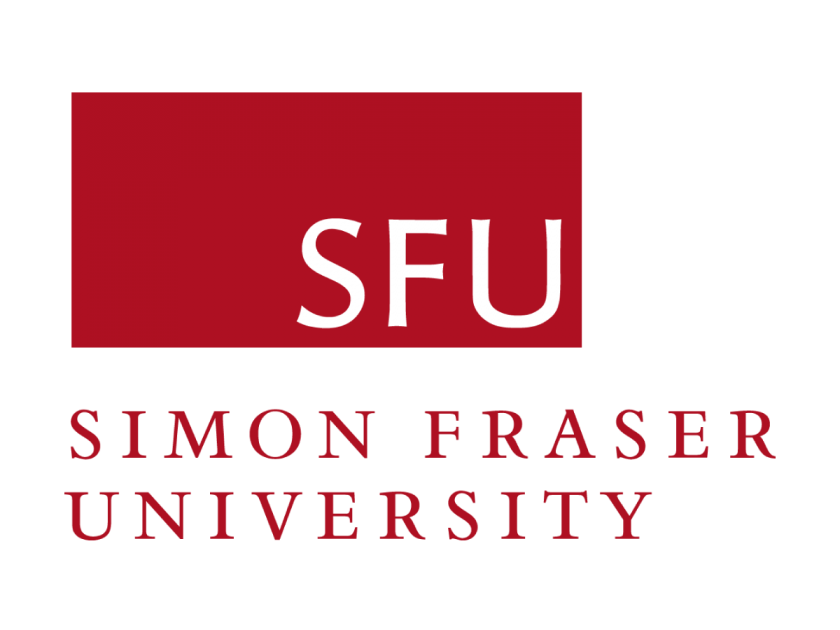Adapting coursebook speaking activities for critical thinking development among non-native speakers
DOI:
https://doi.org/10.54855/979-8-9870112-8-7_2Keywords:
critical thinking, HOTS, TESOLAbstract
Critical thinking (CT), a core component of 21st-century skills, has gained significant attention in English language teaching (ELT), especially within the context of Teaching English to Speakers of Other Languages (TESOL). Recognizing its relevance not only as a life skill but also as a language learning strategy, this study investigates the application of higher-order thinking skills (HOTS) activities in English language classrooms. The research process included a brief literature review on 21st-century skills in language education, followed by an analysis of a selected course book to identify opportunities for CT integration. Modified tasks were then designed to enhance both language use and cognitive engagement. Following implementation, a questionnaire and T-test analysis were conducted with 66 students to assess their perceptions of CT development and spoken English proficiency. Additionally, follow-up interviews were conducted with 7 students to provide a more in-depth investigation. Findings suggest that incorporating HOTS-based activities not only fosters learners' critical thinking skills (CTS) but also leads to noticeable improvements in their speaking performance. Therefore, such activities are recommended for wider use in English language classes.
References
Alger, M., Page, C., & Vincent, A. (2018). Use critical questioning and reflection to support your learning. In Learning to learn online. KPU Press. https://kpu.pressbooks.pub/learningtolearnonline/chapter/use-critical-questioning-and-reflection-to-support-your-learning/
Anderson, L. W., Krathwohl, D. R., Airasian, P. W., Cruikshank, K. A., Mayer, R. E., Pintrich, P. R., Raths. & Wittrock, M. C. (2001). A taxonomy for learning, teaching, and assessing: A revision of Bloom's taxonomy of educational objectives, abridged edition. Longman
Barak M. & Ben-Chaim D. & Zoller U. (2007) Purposely Teaching for the Promotion of Higher-order Thinking Skills: A Case of Critical Thinking, Research and Science Education 37 . 353–369. https://doi.org/10.1007/s11165-006-9029-2
Ben-Chaim, D., Ron, S., & Zoller, U. (2000). The disposition of eleventh-grade science students toward critical thinking. Journal of Science Education and Technology, 9(2), 149–159
Bloom, B.S. (1956). Taxonomy of educational objectives: The classification of educational goals. Handbook 1: Cognitive domain. New York: Longman.
Bracken .B, Brown, E., & Feng, A.(2009).Critical thinking instruction. Journal for the Education of the Gifted. Vol. 33(1), pp. 7–37
Burns, A. (2010). Doing Action Research in English Language Teaching: A Guide for Practitioners. Routledge.
Facione, P. A. (2015). Critical thinking: What it is and why it counts. Insight Assessment.
Fisher, A. (2001). An introduction Critical thinking: An introduction Cambridge University Press.
Freeley, A. J., & Steinberg, D. L. (2000). Argumentation and Debate: Critical Thinking for Reasoned Decision Making (10th ed.). Wadsworth.
Goh, C. C. M., & Burns, A. (2012). Teaching Speaking: A Holistic Approach. Cambridge University Press.
Guest, G., Bunce, A., & Johnson, L. (2006). How many interviews are enough? An experiment with data saturation and variability. Field Methods, 18(1), 59 - 82. https://doi.org/10.1177/1525822X05279903
Ho, T. M. L., & To, M. T. (2022). Delegating critical thinking skills in learners through effective questioning technique in the class. International Journal of TESOL & Education, 2(3), 13–31. https://doi.org/10.54855/ijte.22232
Ho, T. N., Lien, N. T., Tinh, N. T., Hang, N. V. T., & Trang, N. T. (2018). The development of critical thinking for students in Vietnamese schools: From policies to practices. American Journal of Educational Research, 6(5), 431–435. https://doi.org/10.12691/education-6-5-10
Hughes, J. (2014). Critical thinking in the language classroom. ELI. https://www.elteachertrainer.com
López-Ruiz, C., Flores-Flores, R., Galindo-Quispe, A., & Huayta-Franco, Y. (2021). Critical thinking in higher education students: A systematic review. Revista Innova Educación, 3(2), 374–385. https://doi.org/10.35622/j.rie.2021.02.006
Mishoe, S. C., & Welch, M. A., Jr. (2002). Critical thinking in respiratory care: A problem-based learning approach. New York: McGraw-Hil.
Muhammadiyeva, H., Mahkamova, D., Valiyeva, Sh., & Tojiboyev, I. (2020). The role of critical thinking in developing speaking skills. International Journal on Integrated Education, 3(1), 62–64. https://doi.org/10.1002/cc.36819927705
Nurmaharaeni, N., Nappu, S., & Hambali, U. (2022). The implementation of higher order thinking skill (HOTS) in learning reading for EFL learners: A quasi experimental research design at the 8th grade of SMP Negeri 1 Cina. English Language Teaching Methodology, 2(1), 54–64. https://doi.org/10.56983/eltm.v2i1.70
Permadi, H., & Zakiyah, I. A. (2021). Building student critical thinking skills through the peer assessment learning model in calculus materials with the open-ended approach. AIP Conference Proceedings, 2330(1), 040040-1-040040-8. https://doi.org/10.1063/5.0043358
Ramos, J. L. S., Dolipas, B. B., & Villamor, B. B. (2013). Higher order thinking skills and academic performance in physics of college students: A regression analysis. International Journal of Innovative Interdisciplinary Research, 4, 48–60.
Rajendran, N., & Idris, P. U. P. S. (2008). Teaching & Acquiring Higher-Order Thinking Skills: Theory & Practice: Penerbit Universiti Pendidikan Sultan Idris.
Rezaei, S., Derakhshan, A., & Bagherkazemi, M. (2011). Critical thinking in language education. Journal of Language Teaching and Research, 2(4), 769–777. https://doi.org/10.4304/jltr.2.4.769-777
Richards, J. C., & Rodgers, T. S. (2014). Approaches and methods in language teaching (3rd ed.). Cambridge University Press.
Rosa, P. (2021). Student Self-Assessment Critical Thinking Questionnaire. Cambridge University Press & Assessment. https://www.cambridge.org/elt/blog/wp-content/uploads/2021/02/Critical-Thinking-Questionnaire-by-Palmina-Rosa.pdf
Saputra, M. D., Joyoatmojo, S., Wardani, D. K., & Sangka, K. B. (2019). Developing critical-thinking skills through the collaboration of Jigsaw model with Problem-Based Learning model. International Journal of Instruction, 12(1), 1077–1094. https://doi.org/10.29333/iji.2019.12169a
Scriven, M., & Paul, R. (1987). Defining critical thinking. Paper presented at the 8th Annual International Conference on Critical Thinking and Education Reform. http://www.criticalthinking.org/pages/defining-critical-thinking/766
Shakirova, D. M. (2007). Technology for the shaping of college students’ and upper-grade students' critical thinking. Russian Education & Society, 49(9), 42–52
Schafersman, S. D. (1991). An introduction to critical thinking. Smart College Planning. https://www.smartcollegeplanning.org/wp-content/uploads/2010/03/Critical-Thinking.pdf (pp.1-13)
Snyder, L. G., & Snyder, M. J. (2008). Teaching critical thinking and problem solving skills. The Delta Pi Epsilon Journal, 50(2), 90–99.
Ta, T. B. L., Nguyen, T. V. K., & Nguyen, T. H. (2023). Application of Padlet.com to Improve Assessment as Learning in Speaking Classes: An Action Research in Vietnam. AsiaCALL Online Journal, 14(1), 1–17. https://doi.org/10.54855/acoj.231411
Teemant, A., Hausman, C. S., & Kigamwa, J. C. (2016). The effects of higher order thinking on student achievement and English proficiency. Indiana Teachers of Writing Journal, 13(1), 1–36.
Tempelaar, D. T. (2006). The role of metacognition in business education. Industry and Higher Education, 20(5), 291–297
Tiruneh, D. T., Verburgh, A., & Elen, J. (2014). Effectiveness of critical thinking instruction in higher education: A systematic review of intervention studies. Higher Education Studies, 4(1), 1–17. https://doi.org/10.5539/hes.v4n1p1
Truong, H. N. (2024). Students’ perspectives on the use of teacher questions to promote critical thinking in EFL classrooms. International Journal of Language Instruction, 3(2), 1-17. https://doi.org/10.54855/ijli.24321
Truong, N. K. V., & Van, C. H. T. (2024). In-service teacher’s perceptions toward teaching collocation to intermediate EFL learner’s productive skills. ICTE Conference Proceedings, 5, 165-179. DOI: https://doi.org/10.54855/ictep.24513
Tu D.T., Ngan H.T.Q, Khanh N.T.V. (2019) Investigation into the frequency of HOTS activities in general English book, student’s book 2, for diploma students at Hanoi University of Industry. Journal of education management,11(4A) pp. 25-32
Downloads
Published
How to Cite
Issue
Section
License
Copyright (c) 2025 Nguyen Thi Van Khanh, Ta Thi Bich Lien

This work is licensed under a Creative Commons Attribution 4.0 International License.
Authors retain copyright and grant the picte the right of first publication with the work simultaneously licensed under a Creative Commons Attribution 4.0 International License that allows others to share the work with an acknowledgment of the work's authorship and initial publication in this journal.
Authors are able to enter into separate, additional contractual arrangements for the non-exclusive distribution of the proceedings' published version of the work (e.g., post it to an institutional repository, in a journal, or publish it in a book), with an acknowledgment of its initial publication in this proceedings.
Authors are permitted and encouraged to post their work online (e.g., in institutional repositories or on their website) prior to and during the submission process.










